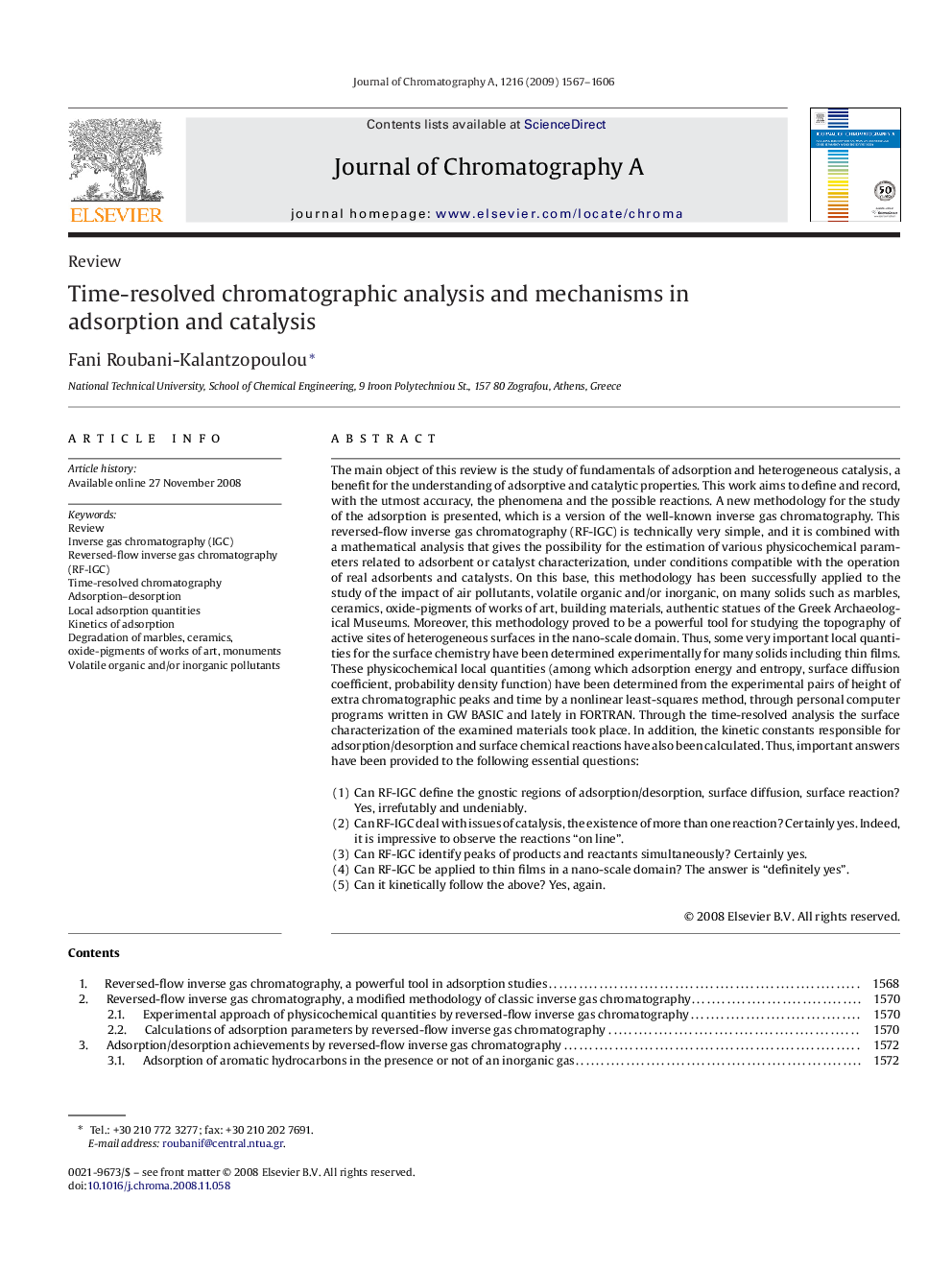| Article ID | Journal | Published Year | Pages | File Type |
|---|---|---|---|---|
| 1205872 | Journal of Chromatography A | 2009 | 40 Pages |
The main object of this review is the study of fundamentals of adsorption and heterogeneous catalysis, a benefit for the understanding of adsorptive and catalytic properties. This work aims to define and record, with the utmost accuracy, the phenomena and the possible reactions. A new methodology for the study of the adsorption is presented, which is a version of the well-known inverse gas chromatography. This reversed-flow inverse gas chromatography (RF-IGC) is technically very simple, and it is combined with a mathematical analysis that gives the possibility for the estimation of various physicochemical parameters related to adsorbent or catalyst characterization, under conditions compatible with the operation of real adsorbents and catalysts. On this base, this methodology has been successfully applied to the study of the impact of air pollutants, volatile organic and/or inorganic, on many solids such as marbles, ceramics, oxide-pigments of works of art, building materials, authentic statues of the Greek Archaeological Museums. Moreover, this methodology proved to be a powerful tool for studying the topography of active sites of heterogeneous surfaces in the nano-scale domain. Thus, some very important local quantities for the surface chemistry have been determined experimentally for many solids including thin films. These physicochemical local quantities (among which adsorption energy and entropy, surface diffusion coefficient, probability density function) have been determined from the experimental pairs of height of extra chromatographic peaks and time by a nonlinear least-squares method, through personal computer programs written in GW BASIC and lately in FORTRAN. Through the time-resolved analysis the surface characterization of the examined materials took place. In addition, the kinetic constants responsible for adsorption/desorption and surface chemical reactions have also been calculated. Thus, important answers have been provided to the following essential questions:(1)Can RF-IGC define the gnostic regions of adsorption/desorption, surface diffusion, surface reaction? Yes, irrefutably and undeniably.(2)Can RF-IGC deal with issues of catalysis, the existence of more than one reaction? Certainly yes. Indeed, it is impressive to observe the reactions “on line”.(3)Can RF-IGC identify peaks of products and reactants simultaneously? Certainly yes.(4)Can RF-IGC be applied to thin films in a nano-scale domain? The answer is “definitely yes”.(5)Can it kinetically follow the above? Yes, again.
